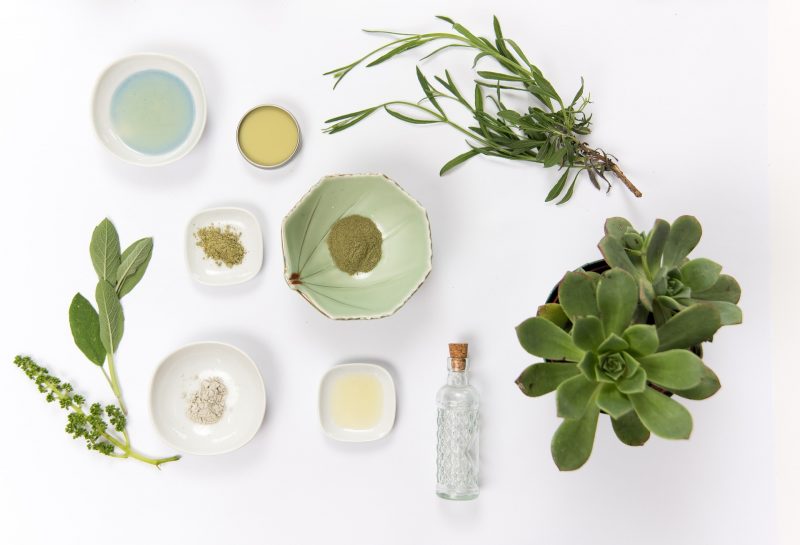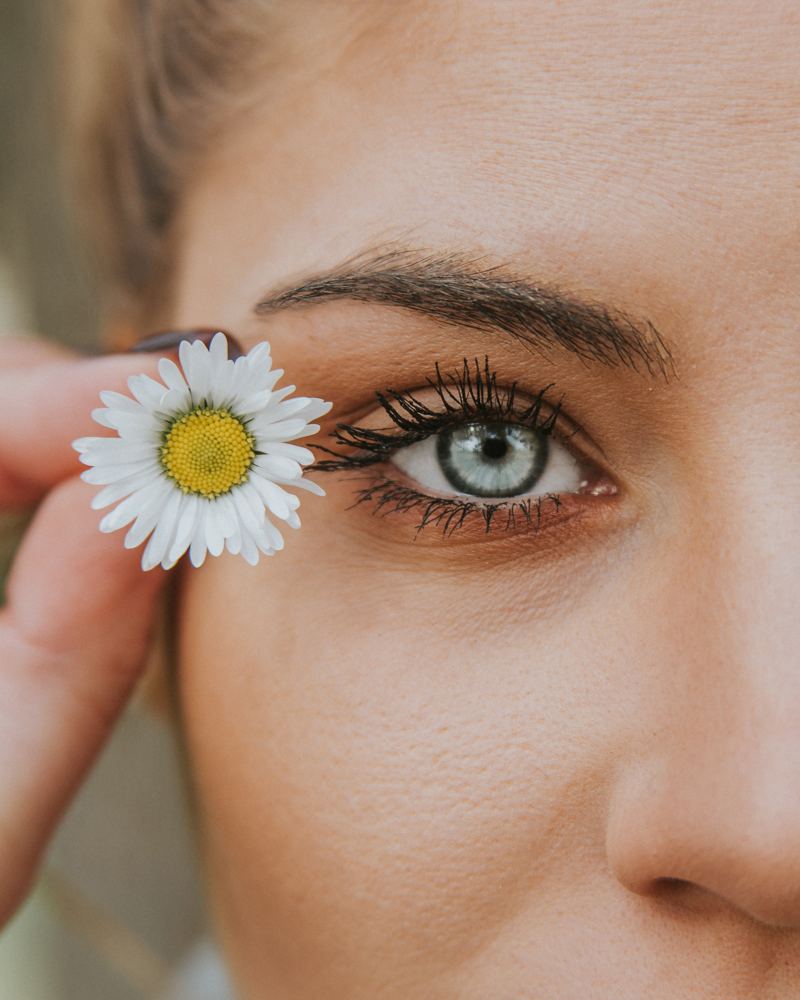What Type Of Chemicals Do Makeup Factories Emit
Recently, the trend of going back to the roots, simple components and not-invasive procedures has been popular in the cosmetics manufacture. It is the reason for the sudden interest in raw materials obtained straight from nature and used to produce natural cosmetics.

Data on the composition of a detail corrective is placed on the label on the packaging. What can we larn from the label? Which ingredients tin can be used in natural products? What are their functions?
Secrets of the label – what information can be found on the packaging of a corrective?
The characterization on a cosmetic usually contains a list of corrective raw materials used for its production. The materials are referred to by using so-called INCI names. This abridgement comes from English language words International Nomenclature of Cosmetic Ingredients. It is a unified naming system of chemical compounds in English and plants in Latin.
When ownership cosmetics, it is worth paying attention to the list of ingredients to be certain that the production will piece of work in a way declared by the manufacturer. One should think almost the rule co-ordinate to which the ingredients included in the corrective are listed in a specific society, starting with those of the highest content in the production. This information allows consumers to make an informed selection when they purchase cosmetics. Due to that, they avert thwarting when purchased products do not work in the expected way. Frequently, this is due to the fact that a particular ingredient is present in too small amount in relation to other components, to produce the desired effect. For this reason, the training of a corrective product with a specific upshot is not an easy task. 1 should select corrective raw materials and so that the product has a homogeneous consistency, and the ingredients' backdrop are in harmony with one another, ensuring the desired results. This applies to both natural cosmetics and preparations containing synthetic ingredients.
What are natural cosmetics? What tin we find in their limerick?
Natural cosmetics are products that contain merely natural raw materials – mineral resources and ingredients of plant or beast origin. In improver, they should exist obtained as a outcome of such processes as: filtration, extraction, drying, distillation, pressing, milling, lyophilization and sieving. Obtaining natural raw materials with the use of the same physical methods, whichprocedure the cloth to a small extent, allows to preserve the nutritional values, vitamins and beneficial substances plant in the raw materials.
Ingredients of animal origin tin can exist used to produce natural cosmetics only when doing so is not harmful to the wellness or life of animals. Such raw materials are, among others, honey, propolis, lanolin and milk. In the production of natural cosmetics, it is besides immune to use cosmetic raw materials obtained in biotechnological processes, i.east. microbiological or enzymatic. Hyaluronic acid, among others, is obtained this way.
In addition to raw materials of plant and beast origin, in natural cosmetics you can also find:
- different kind of body of water components (e.thou. algae)
- essential oils,
- inorganic salts and oxides derived from minerals,
- natural emollients, dyes, emulsifiers (e.chiliad. sucrose esters),
- naturally occurring active substances and preservatives (benzoic acid and its salts, benzyl acrid, salicylic acid).
The chemic industry is constantly working on new formulations based on natural raw materials, which tin can exist used in the production of cosmetics. One of the novelties on the market are bio betaines, which belong to the line of ecological products.
Bio betaines – innovative raw materials for cosmetics, which are safe for people and the environment
Bio betaines are new products in the offer of the PCC Group. They vest to the group of ecological amphoteric surfactants, which are highly efficient and mild. They are chemical compounds produced from natural ingredients. Their unique raw material composition determines their high natural origin index (according to ISO 16280). Bio betaines take been developed for the production of natural cosmetics such as shampoos, hair conditioners, shower gels and face gels, intimate hygiene gels, and other personal care products. They have a positive effect on the peel and hair, softening and smoothing them. They are also prophylactic for people with skin prone to irritation and allergies. They can exist used in products for children and infants.
Bio betaines from the offer of the PCC Group, such as BioROKAMINA K30B, BioROKAMINA K30B MB, BioROKAMINA K40HC and BioROKAMINA K40HC MB are produced using raw material called Greenline MCAA eighty% UP solution, i.e. monochloroacetic acid of natural origin. It comes from natural acetic acid, which is produced in the process of plant fermentation. Moreover, the palm oil derivatives included in the limerick of the BioROKAMIN MB product line are MB RSPO certified (Mass Balance – www.rspo.org). The in a higher place-mentioned raw materials of natural origin brand BioROKAMIN bio betaines 100% ecological, every bit confirmed past the prestigious international ECOCERT COSMOS certificate. Thank you to their high biodegradability, BioROKAMIN bio betaines are completely safe for people and the surround. They tin can be safely used in Eco, Organic, Vegan, Paraben Gratuitous, and GMO Free products.
What substances cannot be used in natural cosmetics?
For the production of natural cosmetics one shall not utilize mineral oils, paraffins, petrolatum, constructed dyes, synthetic fragrances, synthetic preservatives, i.e. parabens or formaldehydes, besides as propylene glycol (PPG), silicones, BHT, SLS and SLES.
The ingredients of natural cosmetics have to be costless from raw materials originating from genetically modified plants too as from raw materials from dead animals or obtained in the style harmful for them. It is also important to remember that the production of natural cosmetics requires undertaking measures protecting natural surroundings.
A natural cosmetic product should non contain constructed substances; although some certifying organizations consider the production to exist natural if it contains less than five% of synthetic substances.

What functions do ingredients serve in natural cosmetics?
Cosmetic semi-finished products used in natural preparations have defined functions. Nonetheless, due to the fact that each natural raw fabric has a rich composition and various properties, it can serve several functions at the same fourth dimension. The most important ingredients that are used in natural cosmetics are antioxidants, emulsifying agents, hydrolates and plant extracts, humectants, exfoliants and surfactants.
Antioxidants – a fight against pare aging
Antioxidants' action is based on reducing the amount of free radicals accelerating skin crumbling processes. These substances limit the growth of microorganisms and protect the cosmetic ingredients from decomposition. The natural antioxidants are: lipoic and ferulic acids, Q10 coenzyme, likewise every bit vitamin C and E. Polyphenols and flavonoids found in grape seeds, rosemary and citrus are besides effective. An additional advantage of these substances is protection of the cosmetic product from external factors, which extends its shelf life.
Emulsifiers – creating a permanent emulsion
Due to emulsifiers, it is possible to create a permanent emulsion, that is, to combine ii phases – water and oil. They give the right consistency and stabilize the cosmetic product. A popular natural emulsifier is GSC (Glyceryl Stearate Citrate) which, in addition to preventing the stratification of phases of cosmetics, is expert for the skin. Another natural substance used as an emulsifier in cosmetics is also beeswax.
Hydrolates – plant based waters
Hydrolates are distillates produced as by-products in the process of essential oils manufacture. Their properties depend on the constitute which they were obtained from. Nonetheless, their common features are the ability of toning the skin, improving its condition and soothing irritations. Hydrolates are also used equally so-called h2o stage in soaps, creams and balms.
Wonderful power of vitamins
Vitamins are organic chemic compounds that have a positive outcome on the status of the pare. Vitamin C, A and E are most commonly used in cosmetics. They finer soothe peel irritations, protect and regulate its density and restore firmness.
Humectants – long-lasting moisturizing
Humectants are substances that are responsible for bounden h2o in both the cosmetic training and the pare. Due to them, moisturization is preserved for a long time, wrinkles are smoothed out and the skin becomes taut, supple and elastic. Natural humectants are aloe, honey, glycerol and hyaluronic acid.
Exfoliants – exfoliation of expressionless peel cells
Exfoliants are ingredients exfoliating the epidermis, and they are commonly referred to every bit scrubs. They remove the outer layer of dead skin cells, stimulating new cells to grow. In addition, they oxygenate and thoroughly cleanse the pare surface. Natural exfoliants can work mechanically or chemically. The first blazon are abrasive substances, i.e. basis seeds or inorganic salts. The second blazon of exfoliants are enzymatic agents that dissolve dead cells. In natural cosmetics, hydroxylic acids are used every bit chemical exfoliants (AHA acids). They are found, among others, in milk, fruit and saccharide cane, and these are substances such as: malic, citric and mandelic acrid.
Plant extracts – the best of plants
Plant extracts are active ingredients extracted from plants in the extraction process using solvents, such equally vegetable oils or ethanol of plant origin. Their furnishings event straight from the properties of the raw material from which they were obtained. They serve antibacterial, firming, strengthening, moisturizing, rejuvenating and reducing fatigue and discolouration functions.
Surfactants – effective cleansing of the skin
This grouping of ingredients is used in cleansing cosmetics, where they are responsible for the saponification of impurities from the surface of the skin and they facilitate skin cleansing. In natural cosmetics Cocamidopropyl betaine obtained from coconut oil is used. This substance has very good foaming backdrop, antibacterial event and it gently removes dirt, without causing skin irritation.
Corrective base – the footing of each grooming
Natural cosmetics can be prepared on water base or oil base. Despite unlike consistencies, no one predominates over the other in terms of performance. It all depends on the preferences of the user, which form of the cosmetic he/she is more than likely to choose.
Floral waters (hydrolates) or evidently distilled water found h2o phase. Floral water contains valuable ingredients derived from plant raw materials (including their essential oils), due to which information technology enriches the cosmetic with benign backdrop. In plough, oil phase in natural cosmetics intensely moisturizes the skin, effectively nourishes it and protects against external factors. In addition, vitamins are dissolved in fats so they are improve able to penetrate deeper layers of the peel. Among cosmetics based on oil base, we can distinguish butters of solid consistency and liquid oils.
Are natural cosmetics better than synthetic cosmetics?
Natural cosmetics are becoming more than and more competitive for constructed products. This is due to the growing awareness of the benefits of using natural products. Before we trust the manufacturer, it is necessary to read the composition of the cosmetic, paying attention to every detail. It is also worth testing the production, checking its operation before regular use. It is good to consider whether it is worth losing the furnishings of improving the status of the torso obtained by means of a good for you diet and exercise by applying parabens, silicones and other synthetic additives on your body. The answer to this question seems obvious. Which cosmetics are ameliorate for u.s.a. – natural or synthetic? In addition to the prevailing durability of the production and the greater pigmentation of the cosmetics with chemical components, they are non better than preparations obtained from natural ones.
What ingredients should be avoided?
Natural cosmetics contain valuable substances that occur naturally, due to which they are safe fifty-fifty for the near sensitive pare. In addition, they are not tested on animals, and their production takes place with intendance for the natural environment.
However, the most important argument for using this type of preparations is the lack of harmful substances that are often found in synthetic cosmetics. Their effects afterward prolonged use may exist harmful to our body. Hence, what substances should exist definitely avoided and why?
BHA (butylated hydroxyanisole) and BHT (butylated hydroxytoluene)
These are organic chemicals that act as preservatives and are present in about all creams and constructed balms. Their antioxidant event extends the immovability of the corrective preparation, but, unfortunately, it is not indifferent to our health. These ingredients accept a negative outcome on the skin every bit they tin cause redness, allergies and also cancer, which has been supported by tests on animals. These compounds are not biodegradable and practise non dissolve in water.
Benzophenone, Benzoylbenzene, Oxybenzone
These are organic chemicals used as solar filters that occur in lord's day creams. Their utilise may cause hormonal imbalances because they act in a manner similar to female oestrogens. In addition, they can crusade allergies. Chemical solar filters do not deliquesce in h2o.
Cyclotetrasiloxane (D4), Cyclopentasiloxane (D5), Cyclohexasiloxane (D6)
These are cyclic silicones, substances that meliorate the consistency of the cosmetic and facilitate its application. After some fourth dimension, they evaporate, only they still negatively affect the trunk. These compounds are toxic and may exist detrimental to our reproduction and may cause endocrine disorders.
Ethanolamines – ingredients of cleansing cosmetics
They vest to organic foam-forming chemicals used in cleansing cosmetics. These substances are responsible for removing impurities from the surface of hair and skin. They often cause allergies, have a toxic effect on the immune system, and are also suspected of being carcinogenic. Ethanolamines are often contaminated with nitrosamines, which are very toxic and should therefore be avoided. The cosmetics preparations use diethanolamine (DEA), triethanolamine (TEA) and monoethanolamine (MEA or ETA).
Parabens – skin irritating preservatives
These are organic chemicals that act as preservatives in cosmetic products. On the label you lot tin can observe them nether the proper name: methyl paraben, ethyl paraben, butyl paraben, aseptin. These substances cause pare irritation, burning and itching, likewise as allergies. The important affair is that parabens have toxic effects not only on the skin, but on the entire organism. They affect the hormonal balance, may adversely affect the normal development of the foetus and act carcinogenically.
Vaseline and paraffin – petroleum derivatives
These are mixtures derived from processed petroleum, often used every bit a cosmetics base. They include, among others, mineral oil, alkane series wax, liquid paraffin and other by-products generated in the distillation of crude oil. The greatest danger associated with the use of petrolatum and paraffin in cosmetics is the presence of impurities in the course of PAH, i.e. polyaromatic hydrocarbons, which crusade cancer.
Analysis of the composition of cosmetics – a guarantee of a good choice
When buying products for hygiene and body care, remember how of import the origin of raw materials used in cosmetics is. Marketing message often does not get hand in hand with the real effect of the product, which instead of improving the condition of the skin – destroys it. This applies non simply to natural cosmetics, but to all cosmetic preparations bachelor on the market. Taking into business relationship the composition of the corrective visible on the label, and not its brand, should become a routine that volition help y'all properly intendance for your skin.

Source: https://www.products.pcc.eu/en/blog/raw-materials-for-the-production-of-natural-cosmetics/
Posted by: guntergeopenceed.blogspot.com

0 Response to "What Type Of Chemicals Do Makeup Factories Emit"
Post a Comment